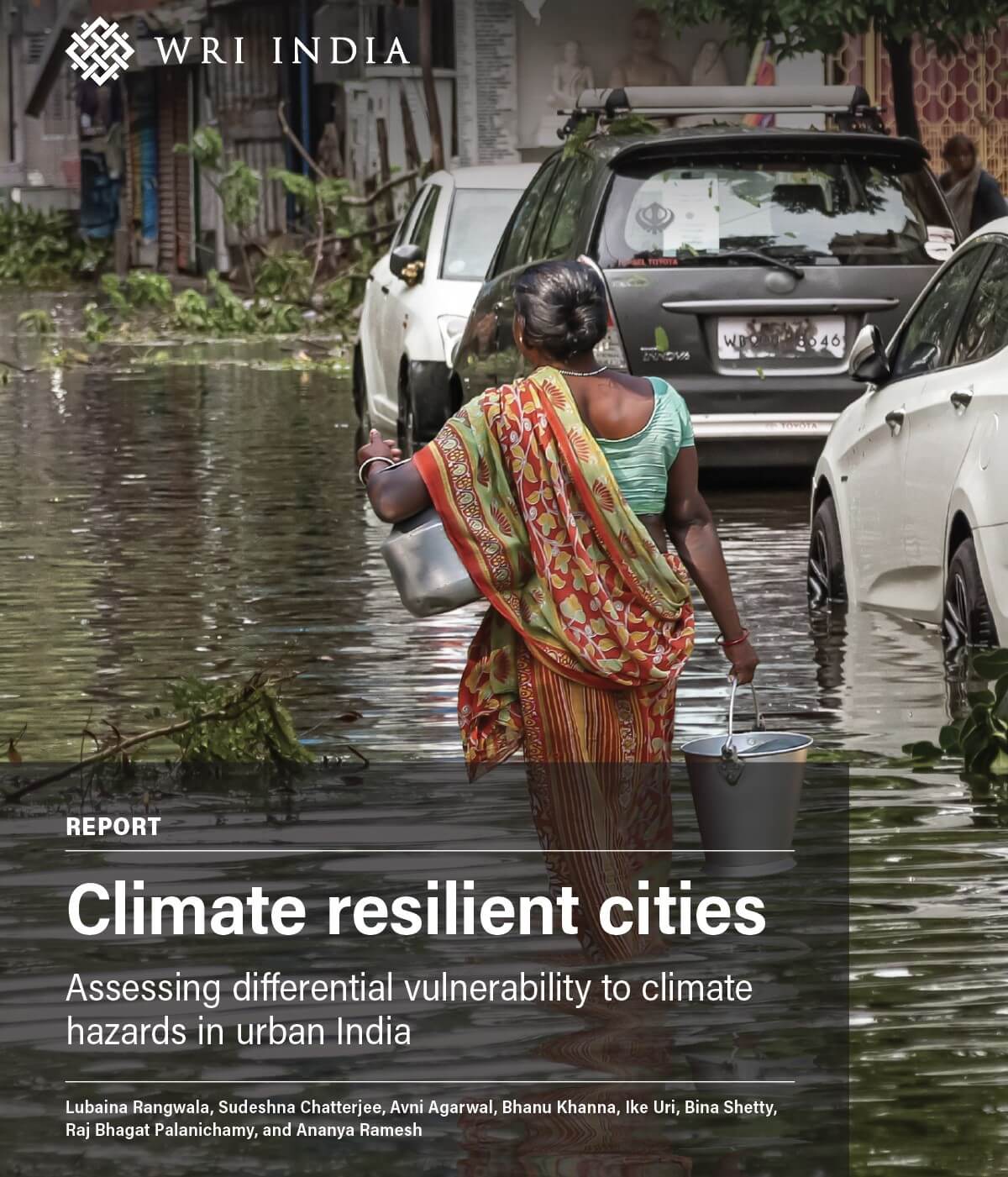Urban Greening for Cooling Cities
by and -
Over the past two decades, extreme temperature events have increased in frequency and severity around the world. The number of people exposed to heat waves has increased by approximately 125 million across the globe. It is estimated that 39% of the global work hours lost due to acute heat were in India alone amounting to 118 billion hours. In fact, cities like Singapore have developed a roadmap for reducing heat by tackling urban heat island effects and outlined heat mitigation strategies and measures in a compendium made available to policy and decision-makers.
Heat is distinct from other climate risks due to its historic lack of governance and legal regulatory structure, spatial and temporal complexity, and invisibility. In India, the National Disaster Management Agency (NDMA) has developed a roadmap for states and cities to plan and prepare for heat risk (NDMA Heat guidelines, 2019) as a precautionary short-term strategy. On the other hand, the India Cooling Action Plan (ICAP), 2019, was implemented to provide sustainable cooling and thermal comfort for all while securing environmental and socio-economic benefits for the society. However, there are critical gaps in its framing – which relies heavily on ‘short-term’ cooling strategies to maintain thermal comfort, but fails to integrate long-term climate projections and needs, which could then inform decision makers to take efficient long-term measures. That said, the ICAP is an opportunity for cities to leverage existing adaptation potential in poor communities and channel this towards long-term equitable cooling action. In Kerala, green roofs, cool pavements, and incentives for environment-friendly building materials are among the strategies suggested in the Heat Action Plan’, a first-of its-kind document prepared by the Kerala State Disaster Management Authority (KSDMA) to tackle rising temperature levels. This is a great opportunity to demonstrate innovative cooling solutions, oriented within the state level framing of heat action for long-term climate resilience.
The theme for the International Day of Forests, 2021 according to the Food And Agriculture Organization of the United Nations (FAO) is Forest Restoration: A Path To Recovery And Well-Being. It is no debate that trees and forests are essential to cities and residents, providing benefits for climate, water, biodiversity, and resident health and well-being. Cities around the world are demonstrating growing interest in investing in nature-based solutions (NBS). There is a vast potential for NBS, to be considered as a feasible option to adapt to climate change, especially in urban areas. Four recommendations that can help Indian cities fully harness the potential of NBS and build long-term resilience against heat stress are discussed below:
1. Raise awareness on NBS
Policy- and decision-makers and communities need to build shared awareness about NBS as a concept that integrates the socio-ecological and economic systems at multiple levels and across stakeholder groups. For this, local examples and traditional practices of NBS need to be reinstated. The city should eventually be able to acknowledge the necessity and importance of NBS and take actionable measures to mainstream it.
For instance, sacred groves in India have been reservoirs of flora, fauna, and local traditional practices. They stand as a perfect example of synergy in the socio-ecological system. The model serves as an example of an NBS solution that needs to be understood, contextualized and promoted in urban and peri-urban areas for long-term resilience against heat, water management and soil conservation.
2. Integrate NBS in policies
There is need for a cohesive policy framework that integrates multiple strategies to include the myriad forms and scales of NBS in cities. This requires a close examination of underlying vulnerabilities and capacities in cities for designing resilient solutions. Decision makers and citizen representatives need to share experiences and insights to identify NBS opportunities and potential.
The Biodiversity Management Committees (BMCs) at the urban local body level offer one such institutional opportunity by which conservation practices and NBS solutions can be administered within its jurisdiction. Planting strategies at a neighbourhood level will not only help in climate resilience in the long-term but also provide socioeconomic benefits to communities.
3. Promote green certification
Green certification of all institutional, commercial and residential buildings could also encourage more planting. Simple NBS implementation opportunities at multiple scale and suited to varied conditions can be mandated by the city to promote more greenery.
For example, green roof legislations are being promoted across the world. Green roofs reduce stormwater runoff, improve air quality, and help mitigate urban heat island effect. For buildings, green roofs reduce the need for heating and cooling. Financial incentives also play a key role in promoting green infrastructure. In Hamburg the tax on a roof with five centimetres of planted soil is half that of an ordinary roof. This encourages owners to switch towards green roofs and incentivises them to promote these strategies.
4. Endorse community stewardship
Community participation is key to building long-term resilience. This is, in part, due to capacities that are built (or leveraged) as a result of co-designing solutions and the sense of ownership it creates. For this, individual efforts and community practices should be acknowledged and furthered.
In Kochi the Cities4Forests initiative aims to build awareness and demonstrate the importance of NBS across different stakeholder groups. A combination of data-science and participatory citizen-science approach (Mapathon) involving the mayor, councillors and resident welfare association representatives has been used to identify restoration opportunities and potential. This, in turn, is enabling targeted interventions by multiple stakeholders to address heat risks in the city.
To sum up, trees provide 68.3 million people with approximately 0.5 to 2.0 degrees Celsius drop in summer maximum air temperatures. Thus, establishing NBS as a holistic approach to heat resilience is a lucrative option. In Indian cities, this would require a new governance and financing approach with a diverse range of stakeholders partaking in planning and implementation. While there are barriers that need to be overcome, this may be the most prudent way forward towards building long-term resilience of communities.
Views expressed are the authors’ own.


